NIL
Oklahoma legislature passes NIL bill for revenue sharing
Listen to this article Summary: – SB 490 lets Oklahoma universities enter NIL revenue-sharing deals with student-athletes. – The bill sets a $20.5M annual cap per school, using only non-state funds. – It passed the House 69-19 and awaits Gov. Kevin Stitt’s signature. OKLAHOMA CITY — A measure allowing state universities in Oklahoma to enter […]
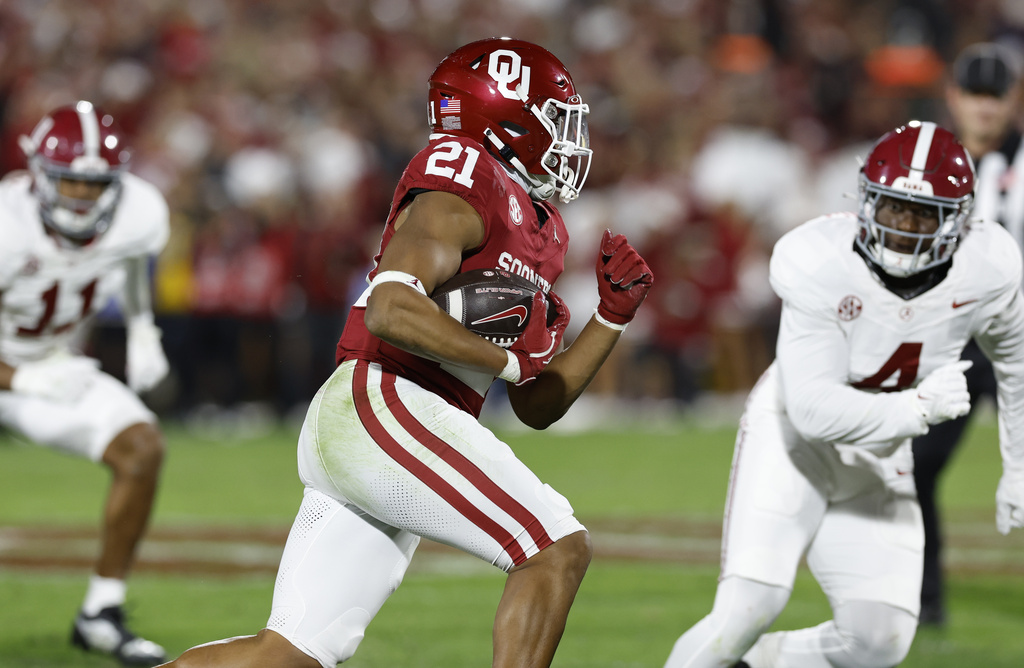
Summary:
– SB 490 lets Oklahoma universities enter NIL revenue-sharing deals with student-athletes.
– The bill sets a $20.5M annual cap per school, using only non-state funds.
– It passed the House 69-19 and awaits Gov. Kevin Stitt’s signature.
OKLAHOMA CITY — A measure allowing state universities in Oklahoma to enter into licenses or endorsement agreements for a student athlete’s name, image and likeness awaits Gov. Kevin Stitt’s signature.
Author of Senate Bill 490, state Sen. Todd Gollihare, R-Kellyville, sees the measure as a significant step in modernizing the state’s collegiate athletics landscape.
The measure amends the Student Athlete Name, Image and Likeness Rights Act, passed by the legislature in 2021, to align with the rapidly evolving national framework of collegiate sports and ensure student athletes and universities in Oklahoma remain competitive.
“As we witness the evolution of collegiate athletics and the end of the amateur athlete era, it is imperative that our state takes proactive measures to keep pace with national changes,” Gollihare said in a March statement. “This legislation strikes a balance between preserving the student experience and ensuring our institutions are not at a disadvantage.”
SB 490 allows Oklahoma’s NCAA member schools to engage in revenue-sharing agreements with student athletes, preventing competitive disadvantages due to less regulation in other states.
According to a release, the bill establishes a $20.5 million annual cap per institution for athlete compensation. Universities can use revenue derived from conference distributions, advertising, sponsorships and ticket sales. They may not use appropriated state funds to pay athletes.
The measure passed the Senate on March 17. State Rep. Mark Lawson, R-Sapulpa, presented it to the House Monday. He said the measure is supported by the University of Oklahoma and Oklahoma State University, the state’s two largest institutions. A 69-19 House vote sent the measure to the governor’s desk.
Discussions regarding revenue sharing for NIL have ramped up in the last two years as interested parties await the pending House v. NCAA settlement. The lawsuit was filed in 2020 by Arizona State University swimmer Grant House and Texas Christian University basketball player Sedona Prince. Plaintiffs claim the association broke antitrust laws by preventing college athletes from receiving compensation for the use of their NIL.
A proposed multi-billion-dollar settlement is pending approval from the court. Additionally, the settlement will establish a revenue-sharing model where schools can directly pay their student-athletes for their NIL rights, using up to 22% of their athletic department revenue, starting in 2025. The new model will replace the previous system where student-athletes could only receive NIL compensation from boosters and sponsors.
Every payment made to student athletes before June 30, 2025, will not count against the newly established salary cap, offering immediate flexibility for institutions as they transition to this updated framework, according to a March Senate release.
Gollihare said SB 490 sets a national precedent by ensuring student athletes receive fair opportunities and maintaining the integrity of collegiate institutions.
“By memorializing these agreements into law, we provide clarity and stability for athletes, universities, and stakeholders alike,” Gollihare said.
With an emergency, the measure will go into effect if and when Stitt signs it.
Stitt has already shown a willingness to allow state schools to facilitate NIL deals with a January executive order. The order allows for the creation of foundations to act as clearing houses for entities to contribute to NIL funds without fear of retaliation or investigation from athletic organizations like the NCAA or athletic conferences. It also ensures that Oklahoma taxpayer dollars will not be used for these payments.
“It’s about leveling the playing field and maintaining the competitive edge that defines Oklahoma athletics,” Stitt said in a January statement.
Gollihare said he’s proud to see SB 490 earn strong bipartisan support in both chambers and head to Stitt’s desk for signature.
“By establishing a clear framework for revenue sharing, we’re leading the way on responsible NIL reform that balances opportunity and accountability,” Gollihare said in a statement Wednesday afternoon. “I appreciate my colleagues’ support and look forward to seeing this become law.”
NIL
College football burns as SEC coaches complain from yacht
Kirby Smart on college football’s future Kirby Smart urges leaders to prioritize the game’s future over personal or conference agendas in playoff talks. MIRAMAR BEACH, Fla. — Let’s not look past the obvious and wade into the ridiculous. They’re football coaches, OK? Their job is to win games, and everything should be seen through that […]

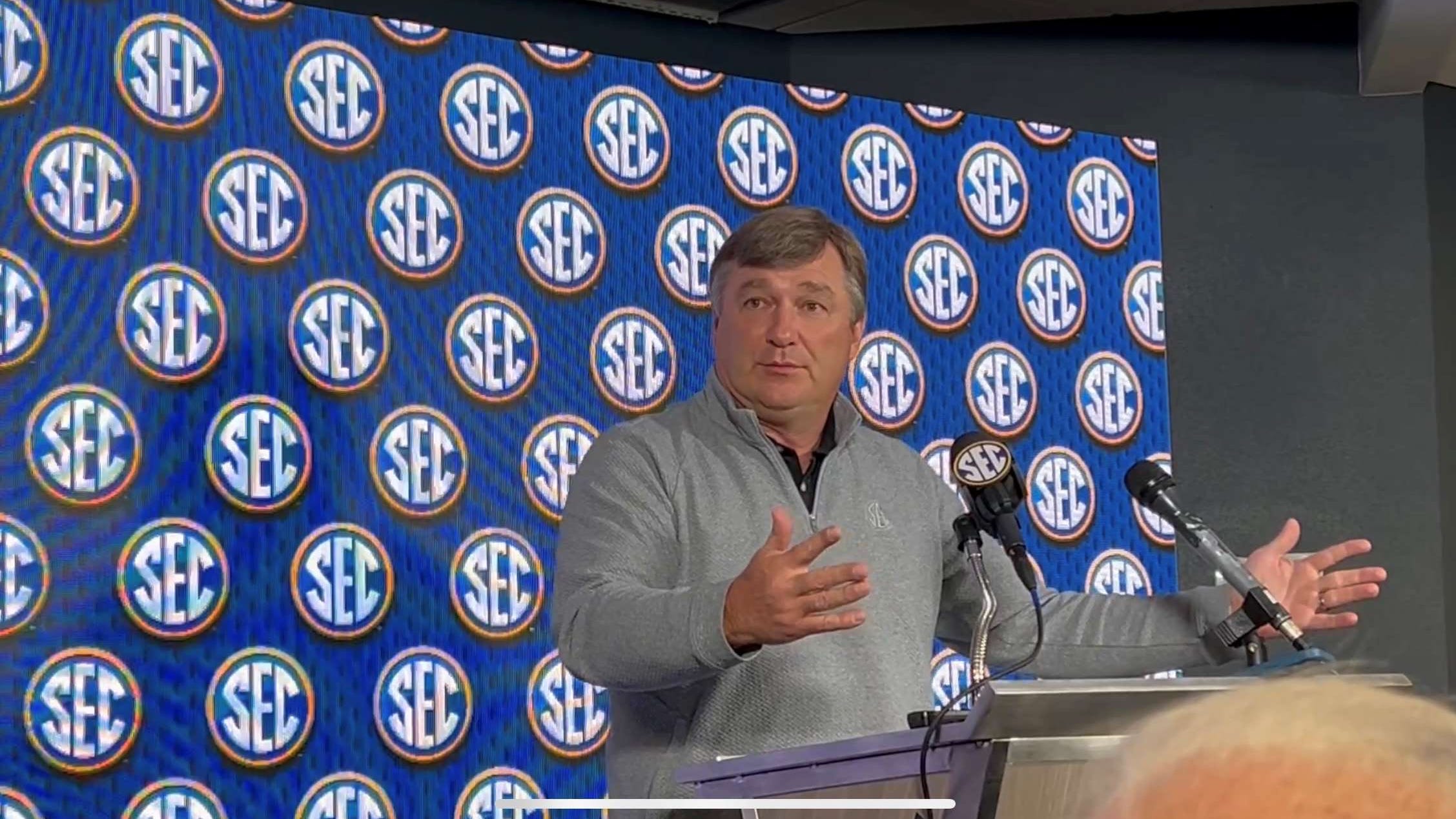
Kirby Smart on college football’s future
Kirby Smart urges leaders to prioritize the game’s future over personal or conference agendas in playoff talks.
MIRAMAR BEACH, Fla. — Let’s not look past the obvious and wade into the ridiculous.
They’re football coaches, OK? Their job is to win games, and everything should be seen through that lens.
Even paradigm change in the sport.
So while just about everyone else associated with college football trudges through the weeds of drastic change, SEC football coaches are talking roster management at the league’s annual spring meetings. That’s right, bubba.
It’s roster size and roster management, right down to the third-team long snapper.
“If I lose two long snappers, where do I get my third one?” said Texas A&M coach Mike Elko.
And if you can’t believe a coach in the biggest, baddest conference in all of college football would say such a tone-deaf thing when the world is crashing down on 70 percent of the sport, that’s just the beginning.
“The biggest problem from our perspective is we don’t have access to a revolving roster (like the NFL) during the season,” Elko said. “The fear we have is if you get a rash of injuries, there’s no avenue to fix it.”
On a 105-man roster.
It is here where we pause, ever so briefly, to soak in the absurdity of that statement — and underscore just how detached coaches are. Again, it’s not their fault; they’re paid to win games.
They’re not paid to fix the College Football Playoff format, or negotiate terms on a pooled media rights revenue concept, or figure out billions in back pay to former players, or have any impact on the SEC playing eight or nine conference games.
They’re given football parameters, and told to win football games within those parameters — or you’re out. It’s about as simple and cutthroat as it gets.
So while college football careens closer and closer to an NFL model, coaches are left wondering why the sport’s leaders refuse to embrace the benefits of a professional structure. Why there are not one, but two free player movement transfer portals.
One access to free movement and an uncapped salary pool (because that’s what it will be with private NIL deals) is bad enough. Two bites at the apple for players, coaches say, is devastating for development.
On a 105-man roster.
“It’s really hard to be playing in a championship setting and have to deal with that,” said Georgia coach Kirby Smart.
Ladies and gentlemen, the biggest, baddest coach in all of college football really said that.
“But when I brought that up as a complaint or a problem,” Smart continued, “It was told to me there’s no crying from the yacht.”
And he was dead serious.
Smart has everything he could possibly want at his alma mater, and every possible advantage to winning. It also helps that he’s the best coach in the business, and Georgia will do anything to keep him happy.
Smart once flew in a helicopter to a high school football game of a recruit, and landed right next to the field before the game began. He and his staff recruit better than anyone in the sport, and he annually has the most talented roster in the nation.
On the other side of the grind, where reality resides, SMU chose to forgo millions in media rights payments from the ACC just to get in the door of power conference football — after paying a what was essentially a $200 million initiation fee by forgoing media rights payments for nine years.
The same SMU that somehow, some way, trudged through the hardships of building a team and earned a spot in the College Football Playoff.
In its first season of big boy football.
I mean, imagine if SMU had lost two long snappers along the way. The horror.
To be fair to these multimillion dollar SEC coaches, they’re creatures of habit. When a plan works, they stick with it.
Who among us could’ve not only seen change, but a completely sidetracked system evolving into an unthinkable abyss?
“We saw where this was going when NIL began,” Elko said, because of course they did. “I don’t think any of it is a surprise to us, once that can got opened.”
So now they’re asking for a single transfer portal window, one that doesn’t affect roster building. Which is sort of like asking for peace in the Middle East.
There are pitfalls for both the winter and spring portals. Place the portal window in the winter, after the regular season, and everyone is dealing roster management during the postseason.
Place the portal window in the spring, and everyone is dealing with a changed roster after three months of preparation and practice for the upcoming season. Teams would then spend a majority of the summer reorganizing a roster, and in some cases, completely changing the face of a team.
Then there’s another teeny weeny problem: If you think player tampering is out of control now, imagine what it looks like in a spring-only portal.
“If there were a (portal) sometime between the end of the last game of the season, and the start of spring ball, that would be ideal,” said Texas coach Steve Sarkisian. “But I don’t think there are a lot of presidents lining up to shift the start of the spring semester for the College Football Playoff.”
You never know. It is the SEC, after all.
Where long snappers mean everything.
Matt Hayes is the senior national college football writer for USA TODAY Sports Network. Follow him on X at @MattHayesCFB.
NIL
NIL Has Killed College Football as we Knew it
College football is one of the most popular sports in America. Every Saturday families gather in front of their television screen to cheer on their favorite team. However, since the NCAA passed the rule allowing college athletes to make money off their name, image, and likeness (NIL) while in school, things have noticeably changed. The […]

College football is one of the most popular sports in America. Every Saturday families gather in front of their television screen to cheer on their favorite team. However, since the NCAA passed the rule allowing college athletes to make money off their name, image, and likeness (NIL) while in school, things have noticeably changed. The shift instantly impacted the college world, allowing athletes to rake in big revenue. How bad can making money in college actually be? Not as good as one might think.
In April, former Tennessee quarterback Nico Iamaleava held out of spring practice due to an NIL dispute. According to Mark Giannotto of USA Today, Iamaleava was trying to renegotiate his NIL contract since the NCAA is expected to approve revenue sharing with schools. The quarterback’s deal was set up for him to make over $2 million per year.
During all the NIL drama with Iamaleava, Vols head coach Josh Huepel was forced to move on from his starting five-star quarterback. “We’re moving forward as a program without him,” he said, “there’s no one that’s bigger than the power T.” Iamaleava entered the transfer portal shortly after the dispute with Tennessee.
NIL
EA Sports Releases Covers for ‘College Football 26’ Video Game
EA Sports is set to release their newest video game this summer, highlighting the most talented college football players in the business. The upcoming release has generated excitement for players and programs, opening up plenty of opportunity for name, image and likeness business. EA Sports brought back their beloved game last year after things were […]
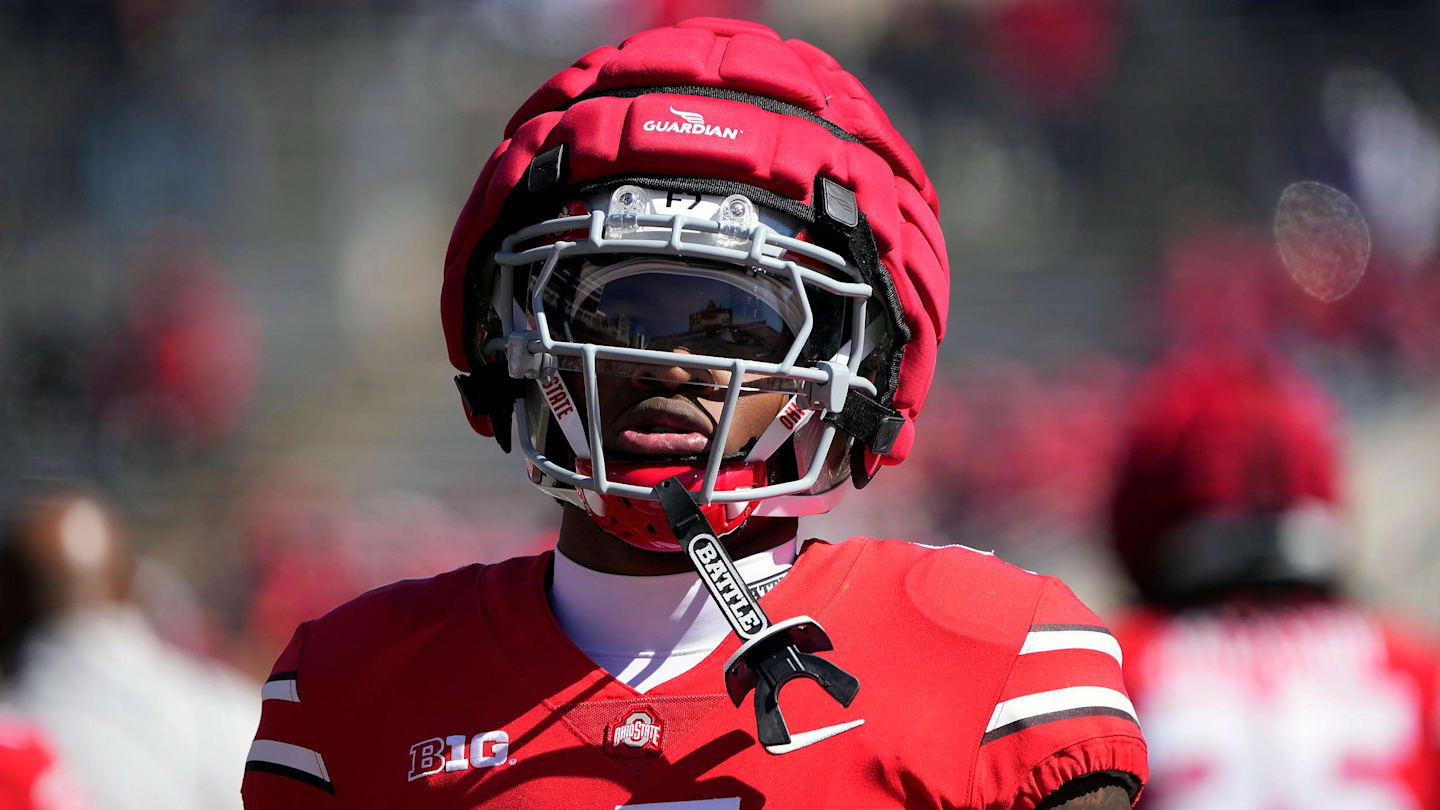
EA Sports is set to release their newest video game this summer, highlighting the most talented college football players in the business.
The upcoming release has generated excitement for players and programs, opening up plenty of opportunity for name, image and likeness business.
EA Sports brought back their beloved game last year after things were put on hold amidst some legal issues involving NCAA Football 14.
But now, progressive NIL rules and regulations have brought life back to EA Sports’ virtual football game, and fans have been excited about it ever since.
Ryan Williams (Alabama) and Jeremiah Smith (Ohio State) will be starting their sophomore seasons in 2025. Both receivers had impressive freshman years, which helped earn their spots on the cover of EA Sports College Football 26.
Smith had an especially successful college football debut, leading the entire freshmen receiving class with 76 catches for 1,315 yards on his way to winning a national championship with the Buckeyes.
The evolution of NIL rules and regulations pioneered this new movement for EA Sports, giving each player that is featured in the game an estimated $600 and a copy of the video game.
The game is set to be released on July 10, 2025, carrying EA Sports’ new-found legacy after the success of “College Football 25.”
EA Sports will continue their promotion of their new game this week.
The trailer will be released on Thursday and is sure to generate even more excitement before the pre-order date approaches.
The special deluxe edition of the game will feature the coaching staff of teams on the cover, with reports that some coaches will be available during gameplay.
EA Sports is set up nicely and ready to build off the success of the video game from last year, and that should only create more interest in the sport and create a larger NIL platform for the players.
NIL
An In-Season Tournament, The MLB Cup, is just what Baseball Needs
The days when the Boys of Summer dominated sports headlines are no more. Major League Baseball has transformed into a regional sport. In recent years the league has innovated, with much success, to draw in more casual fans. The MLB can take a page from the NBA and European soccer to build on that momentum. […]

The days when the Boys of Summer dominated sports headlines are no more. Major League Baseball has transformed into a regional sport. In recent years the league has innovated, with much success, to draw in more casual fans. The MLB can take a page from the NBA and European soccer to build on that momentum.
The MLB Cup is exactly what professional baseball needs to re-establish itself as the sport of the summer.
The Genesis of the Idea
From the mind of Steven Peake, this proposal sounds too good to be true. He’s a fan of Tottenham Hotspur, the 17th-best team in the English Premier League that just threw a parade for winning the Europa League, an in-season tournament. Even though they were nearly relegated, Tottenham went on a run that captivated the rabid fanbase.
Tournaments like the Europa League and the FA Cup have years of built-up capital to over-emphasize their significance. Creating the passion cannot happen overnight, but there is value in creating in-season tournaments.
The NBA Cup’s ratings were the best of the year outside of postseason play, even better than the traditional Christmas Day tentpole event. Adding an MLB Cup in July and into August creates a tentpole event that draws not only regional fans, but also national attention during the most uneventful part of the sports calendar.
The MLB Cup Format
This is a work in progress, but it’s rather simple. The National League and American League compete in the All-Star Game for homefield advantage in the MLB Cup. After the All-Star break, each Monday is an open date, dedicated to the single-elimination tournament. Win or go home.
There are 30 MLB teams, so I’ll let the powers that be determine the proper bracket, but the event should take one month, culminating with the final four at the Field of Dreams. The day after the doubleheader, two teams battle it out for the MLB Cup, finishing in fireworks over the cornfields in Iowa.
What makes this event magical is that single-elimination baseball can create chaos in a sport that needs it. The Dodgers and Yankees are a great World Series matchup, but so many small-market teams feel completely left by the wayside, all thanks to the absence of a salary cap. We all know the Reds’ postseason hopes will be cooked by July, but who’s to say they couldn’t get hot in the MLB Cup? If they go on a run, every casual in the area will be locked in, hoping for a miracle that ends near a corn-maze.
It’s an imperfect proposition we cooked up on Kentucky Roll Call, but it could be the start of something that creates a can’t-miss baseball event in the middle of the summer.
More Kentucky News and Views on the KSR YouTube Channel
Kentucky Sports Radio has expanded its coverage of the Wildcats in the most ridiculous manner possible on our YouTube Channel. Here you will be able to find interviews with coaches and players, as well as commentary from the KSR crew. From Rapid Reactions following big events to our lengthy lineup of live shows, subscribe to the KSR YouTube Channel to stay up to date on everything happening around the Big Blue Nation.
NIL
Texas A&M Coach Frustrated With Lack of Clarity in Upcoming NCAA Settlement
The impending House vs. NCAA settlement approval is expected to shake up NIL and college football in some significant ways. Everything from NIL salary caps to roster limits will be implemented in some fashion or another starting on July 1. While many view this new framework in a largely positive light, some have voiced concerns […]
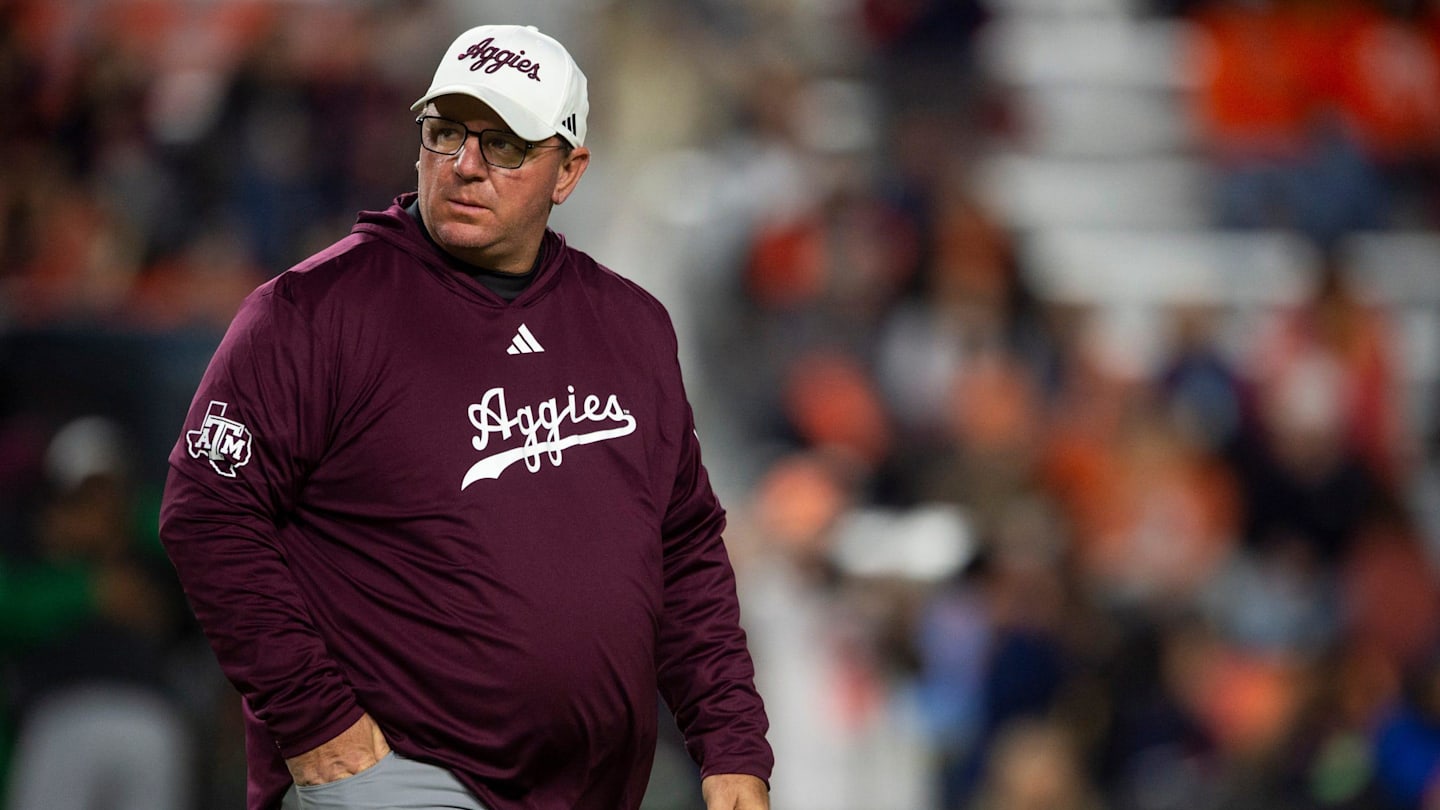
The impending House vs. NCAA settlement approval is expected to shake up NIL and college football in some significant ways. Everything from NIL salary caps to roster limits will be implemented in some fashion or another starting on July 1.
While many view this new framework in a largely positive light, some have voiced concerns over the expedited nature of the implementation and how the rules are, in essence, being switched around on programs in the middle of the offseason.
One prominent figure who falls into this category is Texas A&M Aggies head coach Mike Elko, who recently discussed his frustrations with the uncertainty surrounding the settlement implementation at the annual SEC spring meetings.
According to Outkick’s Trey Wallace, Elko’s frustrations primarily centered on the proposed $20.5 million revenue-sharing cap.
He compared it to the NFL model, noting that they would never suddenly decide to change their cap rules in the middle of the offseason.
“I couldn’t imagine an NFL team getting halfway through the offseason and deciding to change their salary cap rules,” Elko said. “That’s what I guess we’re doing.”
Elko’s frustrations aren’t entirely without merit, as nobody truly knows just how much these new regulations will change the college football landscape until they are actually put into place.
The salary cap is just one of many groundbreaking changes that could be implemented.
The new rule is set to allow athletic departments to pay their student-athletes directly, with a cap of $20.5 million to be split among each sport. Athletes will still be allowed to receive outside NIL endorsements, but these will now require approval from an independent clearing house.
Roster limits are also expected to be added to the sport, with each school allowed to have up to 105 athletes on their football roster each season, which is 20 more than the 85 scholarship limit the NCAA had been allowing up to this point.
It’s clear that this new era of NIL is going to cause far more confusion than answers at the outset, but it’s something Elko and every other coach will have to deal with.
NIL
Greg Sankey reacts to Zakai Zeigler eligibility lawsuit
Former Tennessee guard Zakai Zeigler made headlines around the college sports world on May 21 when it was revealed that he had filed a lawsuit against the NCAA seeking a fifth year of eligibility. The 2025 Third Team All-American and 2x SEC Defensive Player of the Year claimed that he was banned from competing in […]


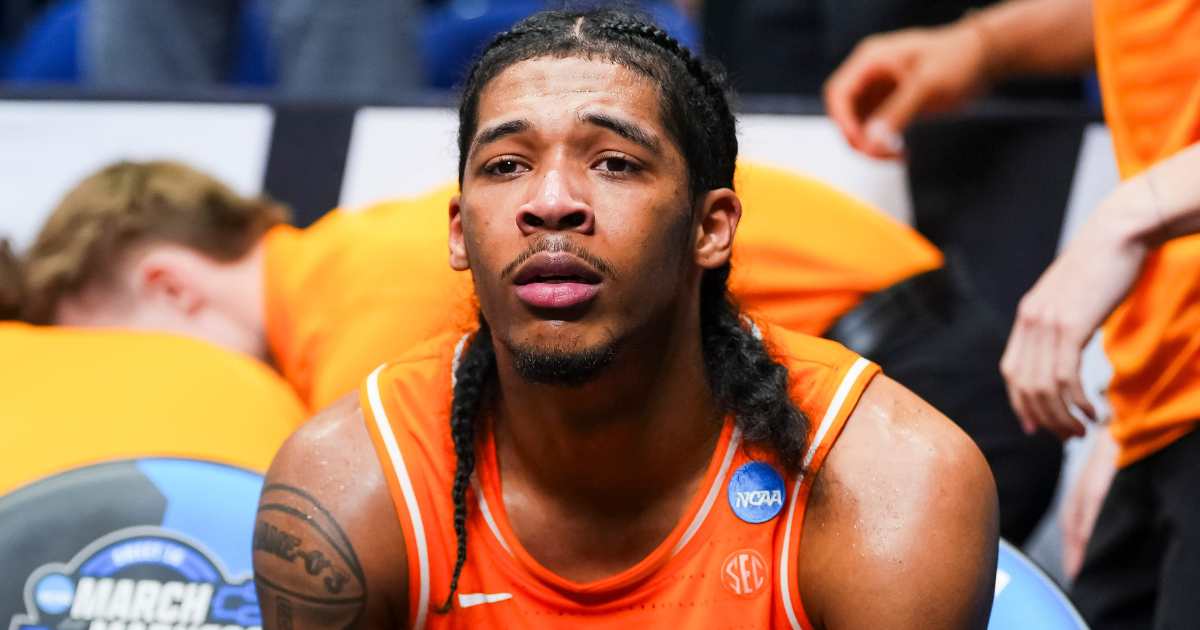
Former Tennessee guard Zakai Zeigler made headlines around the college sports world on May 21 when it was revealed that he had filed a lawsuit against the NCAA seeking a fifth year of eligibility.
The 2025 Third Team All-American and 2x SEC Defensive Player of the Year claimed that he was banned from competing in his final year of his five year eligibility window while going after a graduate’s degree. He however was not yet playing during the 2020-21 season, in which players got an extra year of eligibility. His first season of college basketball was the 2021-22 campaign.
SEC commissioner Greg Sankey touched on the topic in his opening remarks at the 2025 SEC Spring Meetings on Monday.
“I think the conversation has to be informed with the why it didn’t advance before,” Sankey said when discussing whether or not players should be granted five years of eligibility. “This is primarily an undergraduate experience. There will be a lot more summer school, but we’ve got a lot of waivers out there. I think some of the rationale for advancing the idea ties back to ‘can we get through the waivers and just have something standard?’ You can do that with four years of eligibility.”
Diego Pavia paved the way
Sankey doesn’t seem to be a fan of this passing, but the precedent has already been set. Vanderbilt quarterback Diego Pavia won a case seeking an extra year of eligibility last year, as he claimed that the NCAA’s rule of counting JUCO participation (thus cutting his Division 1 career short) limited him the ability to profit from his name, image and likeness.
Zeigler however did not play a season at junior college. He played all four seasons at Tennessee (138 games), where he started in 83 games. He played in at least 30 games all four seasons and leads Tennessee’s program all-time in steals (251) and assists (747). His claim is that previous athletes in the NIL era received an extra year of eligibility, so he should too.
“There are plenty of court cases now related to five years, four years, they’re all over the place. Should my year count at junior college? What about my year at Division 2? Should it count at Division 3? I played two years of NAIA baseball and one year of junior college basketball, so perhaps there’s something out there for me,” Sankey said with a bit of a grin.
It seems as if the SEC commissioner isn’t a fan of all players receiving an extra year of eligibility, but he along with Tennessee fans everywhere will be on pins and needles waiting for a decision.
-

 High School Sports3 weeks ago
High School Sports3 weeks agoWeb exclusive
-
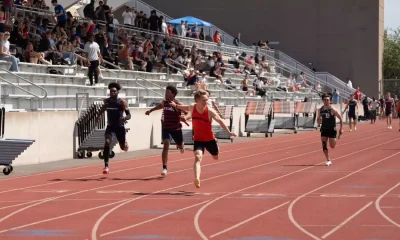
 Sports3 weeks ago
Sports3 weeks agoPrinceton University
-
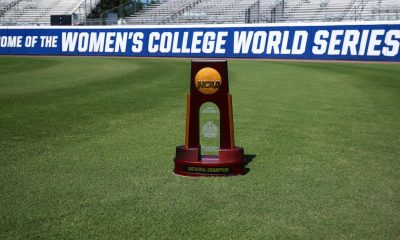
 Sports3 weeks ago
Sports3 weeks ago2025 NCAA softball bracket: Women’s College World Series scores, schedule
-

 Motorsports3 weeks ago
Motorsports3 weeks agoBowman Gray is the site of NASCAR’S “Advance Auto Parts Night at the Races” this Saturday
-
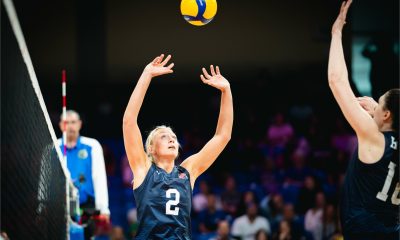
 Sports3 weeks ago
Sports3 weeks agoUSA Volleyball Announces 2025 Women’s VNL Roster
-

 Rec Sports3 weeks ago
Rec Sports3 weeks agoMontgomery County Honors First “Unsung Sports Heroes”
-
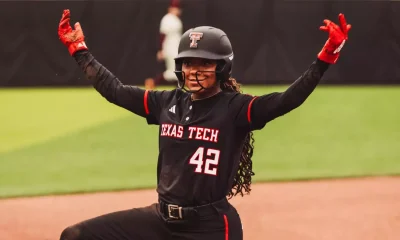
 NIL3 weeks ago
NIL3 weeks agoTexas Tech Red Raiders – Official Athletics Website
-
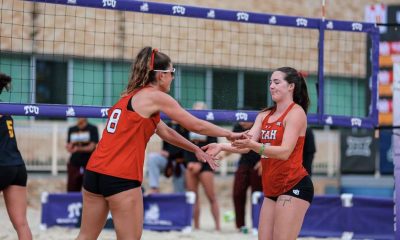
 Sports3 weeks ago
Sports3 weeks agoA fight to save beach volleyball and Utah athletics’ ‘disheartening’ answer
-

 Rec Sports2 weeks ago
Rec Sports2 weeks agoThe Program, a New Basketball Training Facility, Opening in Greenpoint This September
-
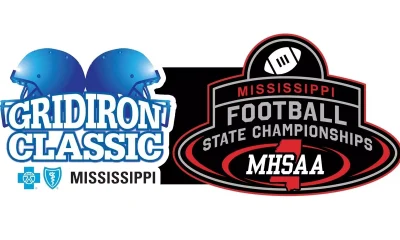
 High School Sports3 weeks ago
High School Sports3 weeks agoToday in the MHSAA





























